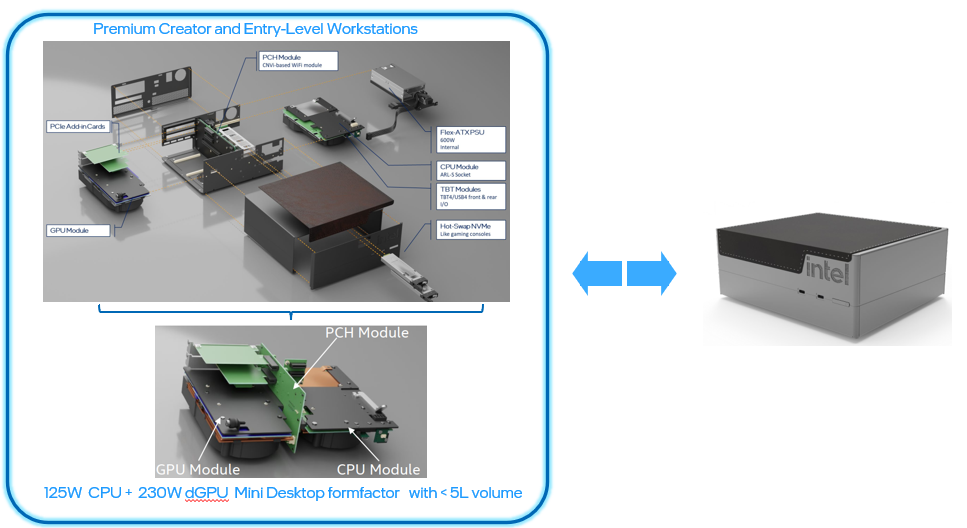Writing in the company bog, Vice President, Platform Engineering Group Gurpreet Sandhu Director System Design, Platform Engineering Group Reshma PP and Sustainability Product Strategy & Marketing Manager, Client Segments Roberta Zouain wrote that Chipzilla is not looking for a one-size-fits-all solution. Instead, it has drafted three groundbreaking proposals catering to different market segments: Premium Modular PC, Entry/Mainstream Modular PC, and Desktop Modular PC.
The Premium Modular PC, though essentially a laptop design, is poised to revolutionise versatility. This concept envisions a three-board system featuring a core motherboard and universal left and right I/O boards. These I/O boards are ingeniously engineered to be common across fan-less Thin & Light designs with a 10W power envelope, and premium fanned designs up to 20W or 30W.
For Entry/Mainstream Modular PCs, Intel suggests a similar structure with a core motherboard and left and right I/O boards is proposed. These boards can be redesigned in this segment to cater to multiple SKUs, providing much-needed flexibility.
Intel claims that the circuit boards are cost-optimized to meet the demands of the mainstream segment without compromising efficiency or innovation.
The Desktop Modular PC design could potentially rewrite the rulebook on repairability. Intel’s diagram reveals a midplane incorporating the Platform Controller Hub (PCH) silicon, with other modules—CPU, memory, and GPU—connecting to this.
These modules and hot-swappable storage slide in and out using rails, all within a compact 5-litre desktop chassis. Intel is also introducing subsystem-level replaceable modules, such as a Type-C connector on a flexible printed circuit (FPC) or an M.2 circuit board, making it easier than ever to swap out damaged parts.
“Our latest proposal for a modular PC architecture is a testament to this enduring commitment. By developing a new approach to system design that allows for easy upgrades and component replacements, we aim to significantly extend the usable life of computing devices, thereby reducing electronic waste and promoting a more sustainable consumption model. By working closely with our customers and partners, we hope to transform the way PCs are designed and help shape the future of computing,” the executives wrote.





